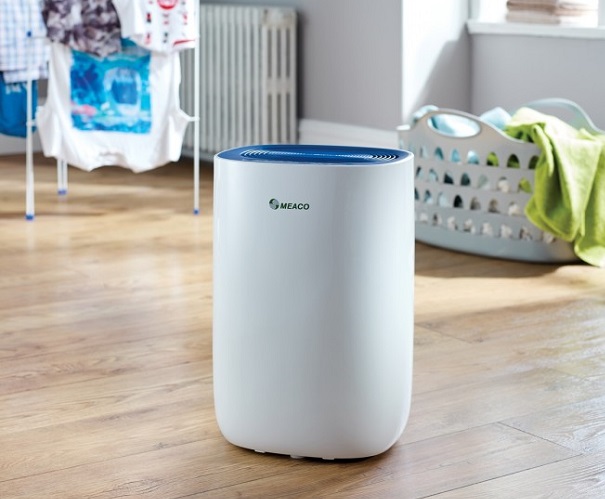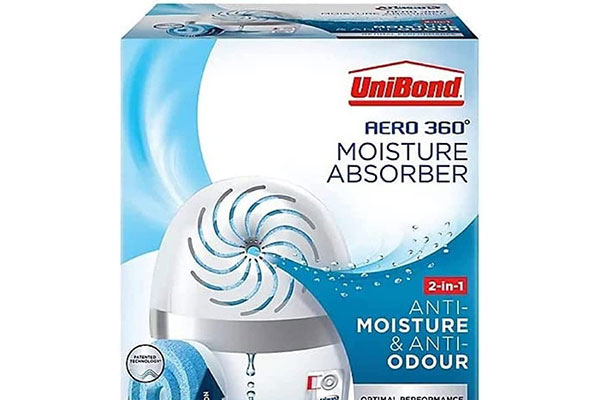You are probably reading this because you have noticed that your walls are wet? You might be asking why the hell is there condensation on the interior walls of my home? It is a very annoying problem and can lead to more serious problems such as mold growth if left unchecked. So, how do you stop condensation on walls? let’s take a look.
I have personally experienced this issue in an old flat with poor insulation. Every morning I would wake up and my windows and walls would be covered in condensation. Sometimes the problem gets so bad that condensation can form on carpets and bedsheets. I spent some time researching the best way to deal with the issue. Guess what, I managed to solve the issue almost overnight, and it was easy. If you want to solve this problem for yourself, then read on. First, we will look into how the problem occurs in the first place and how you can fix it.
What causes condensation on walls and windows
It is important to understand why a problem is occurring if you want to fix it. To be clear here, we are talking about condensation on walls and not big damp patches. Damp patches are usually a result of structural issues or leaks and we are not talking about those.
Condensation occurs when moisture in the air comes into contact with a cold surface. Two things control this process, the moisture level in the air and the temperature of the surface (walls and windows).
Generally speaking, you can’t control the temperature of exterior walls without investing a significant sum of money. In my case, I was living in an old flat with thin and uninsulated walls forming the exterior. This meant that my exterior walls were unusually cold. These colder than usual surfaces cause water in the air to condense more easily when they come into contact with it. The same applies to older windows that aren’t double glazed or sealed properly. This is also the reason why condensation on walls and windows is much worse in winter because the surfaces become colder.
Ok, so we can’t control how cold the walls are, what can we do to stop condensation forming on the walls?
We can control the moisture level in the room! Depending on which room the condensation is forming in, the cause may be different. Condensation on kitchen and bathroom walls is usually caused by regular activities such as cooking and showering. Condensation on bedroom walls usually has a more surprising cause, breathing at night. My bedroom would always have wet walls because the warm air produced by me sleeping and breathing all night would condense on the extra cold walls.
So we know that the best way to stop condensation on walls is to control the moisture level in the air. What are the best ways to control this?
The Easiest way to stop condensation on walls
There are a few ways of stopping condensation on walls such as ensuring proper ventilation and wiping it up constantly. The best and easiest way, however, is to purchase a dehumidifier. See below to find one of the best dehumidifiers on the market.
A dehumidifier will extract moisture from the air, this means that there will be much less water in the air to form condensation on your walls and windows. It is simply the best and easiest way to control condensation on walls and windows. It might require an initial upfront investment but it is worth it in the long term. A dehumidifier allows you to simply turn it on and empty it when required. You won’t have to worry about potentially having mold growing where you don’t want it to, such as in a kitchen or bathroom.

This is what I did to stop the problem in my flat and it worked quickly and effectively.
You can expect to stop seeing condensation on your walls and windows in a matter of days. Please consider some of the below points before you wade into the market to make a purchase:
Cheaper isn’t always best
Often times we like to buy the cheapest product possible and think we have grabbed a bargain. With dehumidifiers, this is usually not the case. For example, most mini dehumidifiers which usually cost under £50 will not be powerful enough to completely clear your walls of condensation. We recommend you purchase a quality unit in the first instance such as a Meaco, we have reviewed their top models here.
Know your needs
If you are purchasing a dehumidifier for a bedroom, then you need to make sure that it is sufficiently quiet to be able to run it whilst sleeping. Likewise, if you need it for a different room, you may not care about how quiet it is. Room size should also impact your choice. A medium-sized bedroom will require an 8L/day unit at least to fully remove condensation on walls and windows. Larger rooms and properties may require a 20L/day unit.
Energy efficiency
Like we just said about cheaper units, cheaper isn’t always better. Generally, cheaper dehumidifier brands are less energy-efficient than quality brands. The money you save by buying a cheaper dehumidifier will quickly disappear when your energy bill shoots up. Many premium dehumidifier brands such as Meaco produce 12L/day dehumidifiers that consume as little as 160 watts. We have written a guide about energy-efficient dehumidifiers here.
Other Ways of Stopping Condensation on Walls.
Here we will quickly look at some other, less effective ways of removing condensation from walls.
Proper Ventilation
Proper ventilation can help stop condensation on walls by reducing the moisture level inside a room. When you open a window, the humidity will escape and this will allow some condensation to evaporate. The downsides of this approach are quite significant though. Who wants to have to leave a window open constantly? Especially if it is wintertime or you don’t want to leave your windows unsecured constantly. Proper ventilation can work to an extent but it has many drawbacks, particularly in colder winter months.
Wipe the Condensation
This is quite a bad method and doesn’t address the cause of the problem. You can wipe the condensation up every morning with a squeegee tool for windows and a towel or cloth for the walls. Who wants to have to do this every single day? It also doesn’t solve the issue of having too much water in the air which can result in mold growth and damage possessions.
Expensive Structural Improvements
This is one of the most effective ways to treat the problem but it costs a lot of money. It is significantly cheaper to just buy and run a dehumidifier than altering the walls of your home. What if you rent and don’t have the option of doing this type of work?
Wrap up
Condensation on walls and windows can be a real pain in the backside. Who wants to wake up every morning to find their walls are all wet? Or see that after cooking dinner, all your dining room walls are soaked? No one. The easiest way to deal with the problem is to buy and run a dehumidifier to reduce the moisture in the air. This solution has immediate results and will start to work within a few hours of running the dehumidifier.
We have seen some other ways of fixing the problem. but these are nowhere near as practical as simply getting a dehumidifier to take care of it for you. We hope you found this article useful and that you can now fix this incredibly annoying issue. Feel free to comment or contact us if you need any further information. Enjoy your nice and dry walls and windows!
Last update on 2024-04-25 / Affiliate links / Images from Amazon Product Advertising API











